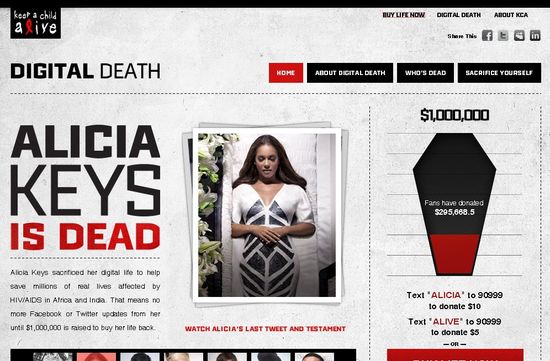
This idea isn't bad. The celebrity support is top notch. And the branding is really strong. So why did a campaign like this which has all the individual pieces it should need for success fall flat? Here are a few reasons:
-
Inherently egotistical idea. The premise of this entire campaign was built on what is a fairly egotistical idea: that fans care so much about the tweets of their favourite celebrities that they would be willing to donate money to a cause in order to get them back. For core fans – this premise likely holds true … but there are likely many fans of the celebrities who just don't care THAT much.
- Asking for too much. When I first saw this campaign last week, they had a minimum donation of $10. Immediately that struck me as a huge strategic mistake. Currently it has been reduced to $1, but this choice likely cost them many supporters who might have given a buck or two at the beginning of the campaign when the buzz was highest, but would never give $10. Even the American Red Cross raising money after the Haiti earthquake had a minimum of $5. The initial minimum of $10 was a big hurdle, and even though they corrected it – it likely was too late.
- Unclear connection to cause. The campaign was understandable for what the celebrities were doing, but the connection between stopping the use (or overuse) of social media and helping keep kids fighting AIDS alive was a very thin one. The best campaigns are ones where the themes work together, and in this case they didn't.
- Going against cultural trends. There is a big cultural trend today towards feeling overloaded. People are bombarded with marketing messages, tweets, updates, followers and friends. Most of us just want a bit more simplicity, so when a group of relatively prolific celebrity Twitter users decide to "go dark" – more than a few fans likely breathed a sigh of relief. For those folks, paying to bring back the noise would be like writing a check to someone to punch you in the nose. The money might go to a great cause, but I still like my nose too much for that.
How could this campaign have worked and still made a big impact? One core thing I would have changed is to use the power of all these celebrities Twitter accounts for something more than silence. What if they all chose to spend 24 or 48 hours ONLY tweeting about Keep A Child Alive? Or how about donating some of their own money for everyone who asks them to stop their digital death?
This campaign had a chance to be something great – but now the only thing left for us to see is how the celebrities participating will come "back to life" online and quietly leave this behind them.
Update 12/6/10 4:06pm – Usher breaks his "digital death" pledge prematurely.
Update #2 12/6/10 9:02pm – Looks like the campaign miraculously went viral and raised over $700k in less than 24 hours so they are now at over $1 million raised. Either that or some of the celebs put up some cash to get their own digital lives back.








WE RECENTLY REMOVED COMMENTING - LEARN WHY HERE >